How to keep your MacBook safe in public?
If you regularly connect to free WiFi access points in hotels and cafes, your data may be at risk from snoopers and hackers. Someone may try to read your email or worse when a hacker establishes a Wifi network to collect your login information.
The best solution to this problem is to use the connection you can control such as home broadband or 3G / 4G hotspot on iPhone. However, there are situations where you still have to use the public network. Therefore, follow these instructions to keep your data safe as possible.
How to protect MacBook safety when using public places
- 1. Disable sharing options
- 2. Use VPN
- 3. Use 2FA
- 4. Use browser browser more secure
- 5. Lock the device
- 6. Track the lost Macbook
- 7. Disable guest users
- 8. Use the on-screen keyboard
1. Disable sharing options
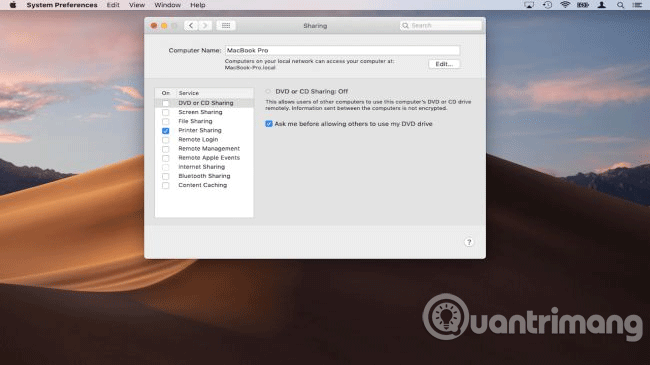 How to keep your MacBook safe in public? Picture 1
How to keep your MacBook safe in public? Picture 1
Apple allows users to share folders and files with other users on your network. This is a very handy feature when used on a home network, but you don't want outsiders to have access to your information when connecting to a public Wi-Fi network.
By default File Sharing is disabled on the Mac, but you can check it again by visiting System Preferences> Sharing . Make sure the File Sharing option is not selected.
You also need to disable other sharing options such as Remote Login and Screen Sharing .
2. Use VPN
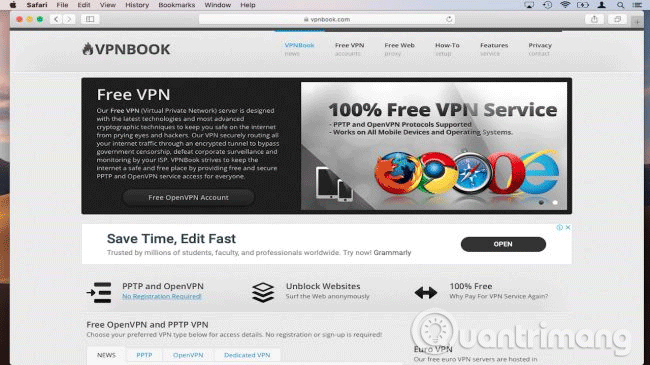 How to keep your MacBook safe in public? Picture 2
How to keep your MacBook safe in public? Picture 2
If you are using an unsecured Wifi network (open network does not require a password), it will be easier for hackers to monitor data transmitted through your device and the Internet.
You can use VPN to establish an encrypted connection to the provider's server. Information such as passwords, emails, social networking photos sent via this encrypted connection makes it difficult for hackers to collect your data and find the site you visit.
If you don't know which VPN software to use, you can refer to article 11 of the best VPN software today
3. Use 2FA
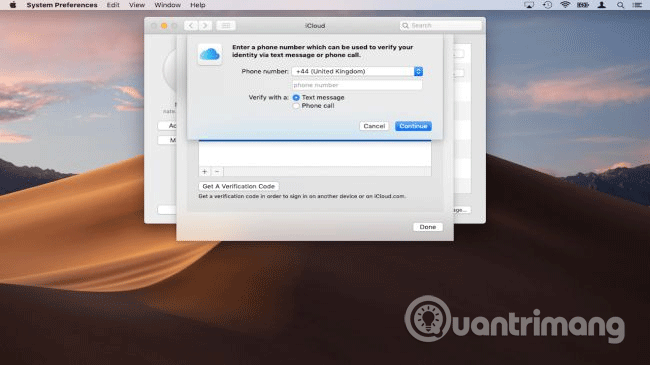 How to keep your MacBook safe in public? Picture 3
How to keep your MacBook safe in public? Picture 3
2FA (Two-factor authentication) is a simple yet very powerful way to protect your online login information. It works by requiring a six-digit code to be sent to the mobile device when you log in from a new location.
You need to enter this code with a password, so if someone wants to access your account they need a password and can access your phone to get this six-digit code. When using a public Wi-Fi network, a hacker can steal your password, but if you have two-factor security set up, you don't need to worry because hackers need more information to access your account.
To set up two-factor authentication, you need to install a dedicated 2FA app on your device like Google Authenticator or Free OTP. Many online services like Facebook and Twitter currently offer 2FA. Refer to the article How to set up two-factor authentication on all social networks to establish two-factor authentication for your social network.
4. Use browser browser more secure
 How to keep your MacBook safe in public? Picture 4
How to keep your MacBook safe in public? Picture 4
Simply choose to use Apple Mac you are protected from the majority of malware on the Internet, designed to run only on Windows machines.
However, some free Wifi providers claim that you connect to their network through the landing page with third-party ads that may link to harmful content. You can block 99% of this harmful content using the AdBlock Plus browser extension.
This extension is available for most major browsers and ad blocking, so you will be less likely to click on the harmful link. You can also install the HTTPS Everywhere extension of the Electronic Frontier Foundation to force your browser to use the secure version of the site if available, encrypt the connection between you and the site.
Some organizations may require you to install third-party applications on your Mac before using their free Wi-Fi network. In this case, you should refuse because there is no way to know if the program is safe.
5. Lock the device
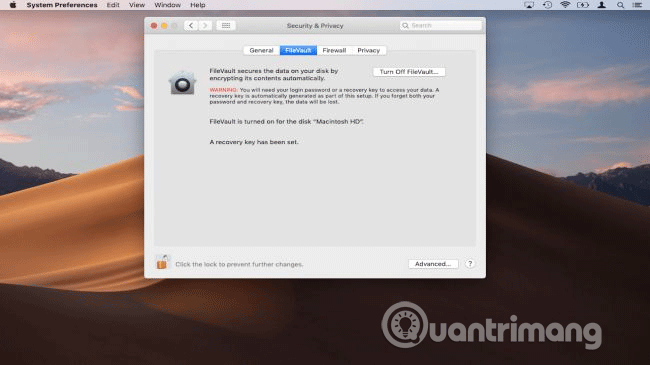 How to keep your MacBook safe in public? Picture 5
How to keep your MacBook safe in public? Picture 5
One of the easiest ways to steal your login information is to peek when you are typing in your login information. So every time you sit in a public place, find a place where you can lean against the wall or sit in the corner.
If using the MacBook produced in the last few years, FileVault will be turned on by default on your device. Even if your Mac is stolen, they cannot access the data without the correct password.
You can check whether FileVault encryption is enabled by accessing System Preferences> Security & Privacy , click FileVault .
6. Track the lost Macbook
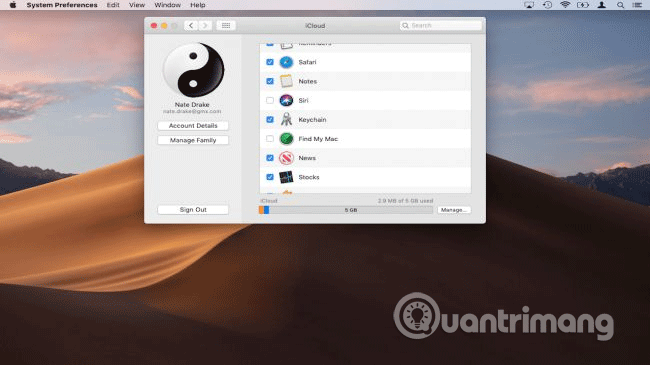 How to keep your MacBook safe in public? Picture 6
How to keep your MacBook safe in public? Picture 6
Apple's Find my Mac service is used to keep track of lost MacBooks. To enable this feature, go to System Preferences> iCloud and check if you are logged in to MacBook using your Apple ID.
Be sure to select the Find my Mac option . If you accidentally lost your computer, access the iCloud website with another device, then log in with your Apple ID.
Select Find my Mac to display the last known location of the Mac. You can also lock the MacBook remotely when it reconnects to the Internet.
Anyone using the device will have to enter a special code to use it, even if the hard drive has been deleted. You can also choose to delete data on the device remotely when it is online.
7. Disable guest users
Mac OS has a Guest account for friends and acquaintances to use your computer. In theory, visitors can log in, browse the web and use programs without accessing your sensitive files or other information.
In fact, this is a big security hole because strangers can access the website insecure. To disable the Guest Account, go to System Preferences> Users & Groups , select the guest account on the left and uncheck Allow guests to log in to this computer .
8. Use the on-screen keyboard
Some types of malicious software called loggers key can record the letters you press on the keyboard to get passwords and send them to hackers. Skilled digital spies can also use the microphone to perform audio cipher analysis that allows them to track keystrokes.
These types of attacks are rare but if you use a Mac in a public place, you will be more vulnerable to attack. In this case, you should use the keyboard on the macOS screen. This will cause confusion for the key logger and when using the mouse, there is no sound from the keyboard emitted so that the microphone can be captured.
When entering sensitive information such as passwords, go to System Preferences> Accessibility , scroll down to Keyboard and click on Accessibility Keyboard .
In the above ways, you will be using your Mac safer than in public.
You should read it
- 4 potential risks of using public wifi that users should know
- 9 things you should never do when using public WiFi
- Learn about Public IP address
- How to use the public USB charging port safely?
- Things to know when using wifi in public places
- What is Jacking Juice? Why shouldn't the phone be charged in a public place?
- 5 ways to be safe when using public computers
- How to transfer from Public Network to Private network on Windows 10
- The easiest way to play Wifi on Windows 8
- Password protection when using public computers
- 8 basic principles when using a public PC
- 8 tips to secure wifi wireless networks for businesses and families






 5 ways to be safe when using public computers
5 ways to be safe when using public computers The simplest way to exit Macbook Safe Boot mode
The simplest way to exit Macbook Safe Boot mode How to use the public USB charging port safely?
How to use the public USB charging port safely? Learn about Public IP address
Learn about Public IP address Top 5 MacBooks worth spending money on in 2025
Top 5 MacBooks worth spending money on in 2025 What is Jacking Juice? Why shouldn't the phone be charged in a public place?
What is Jacking Juice? Why shouldn't the phone be charged in a public place?